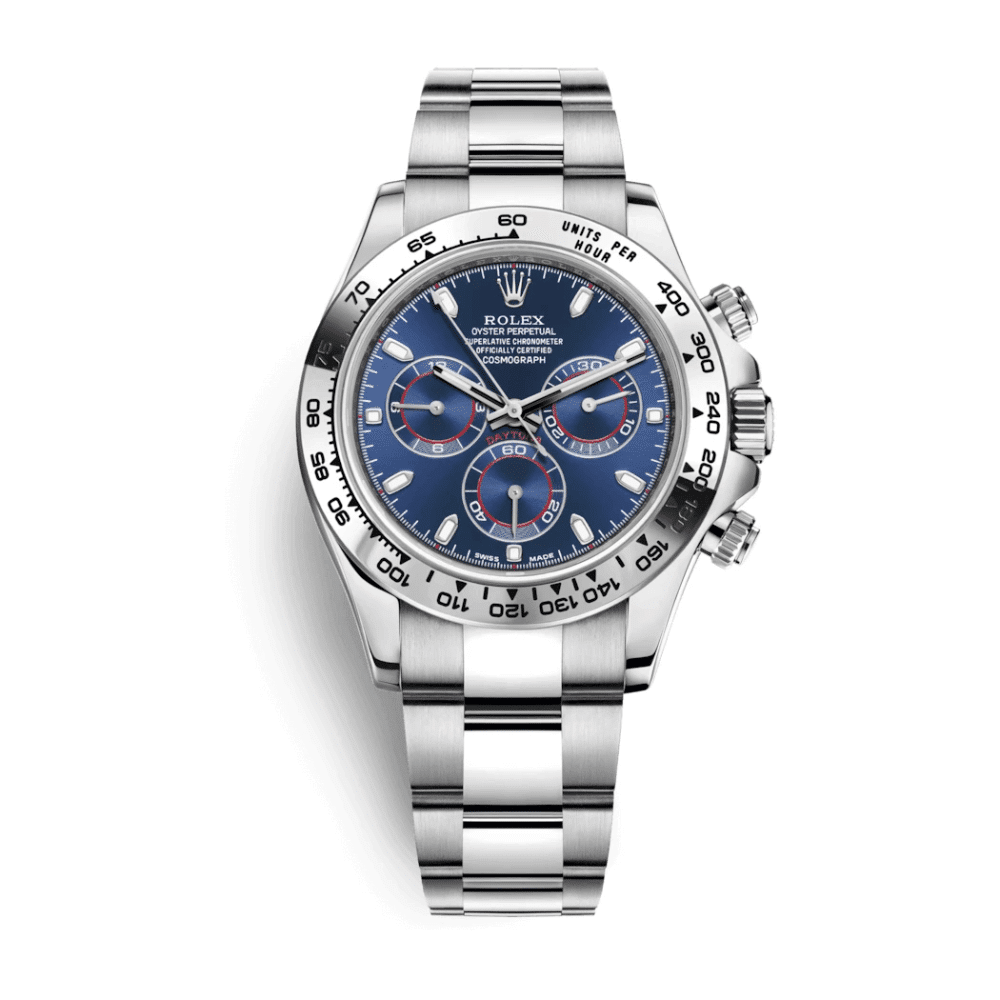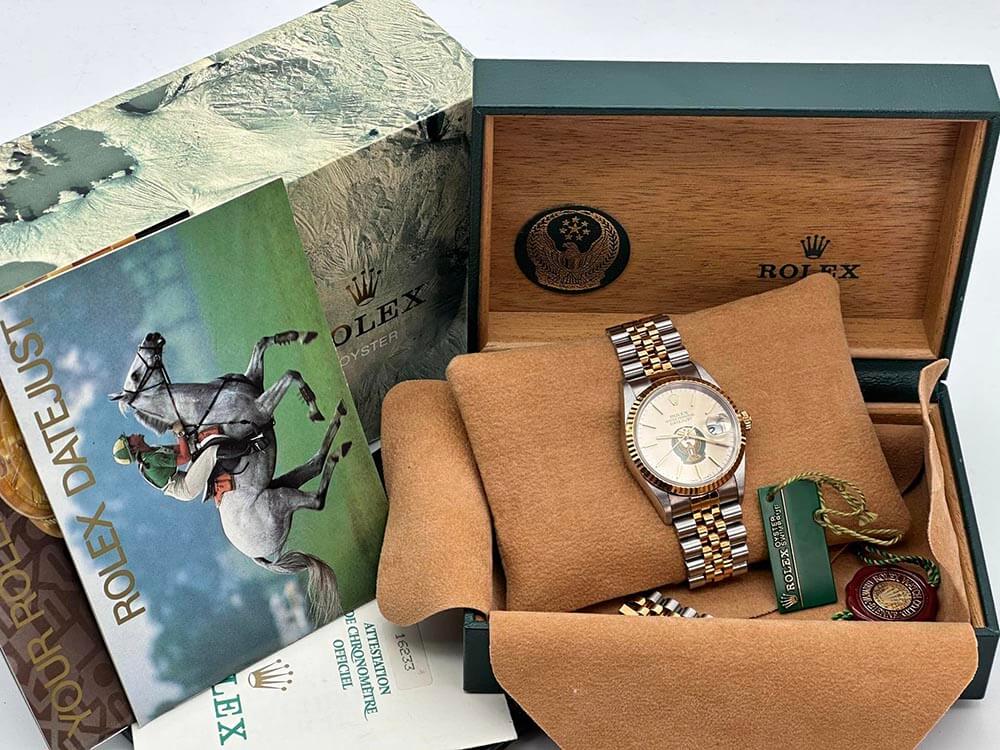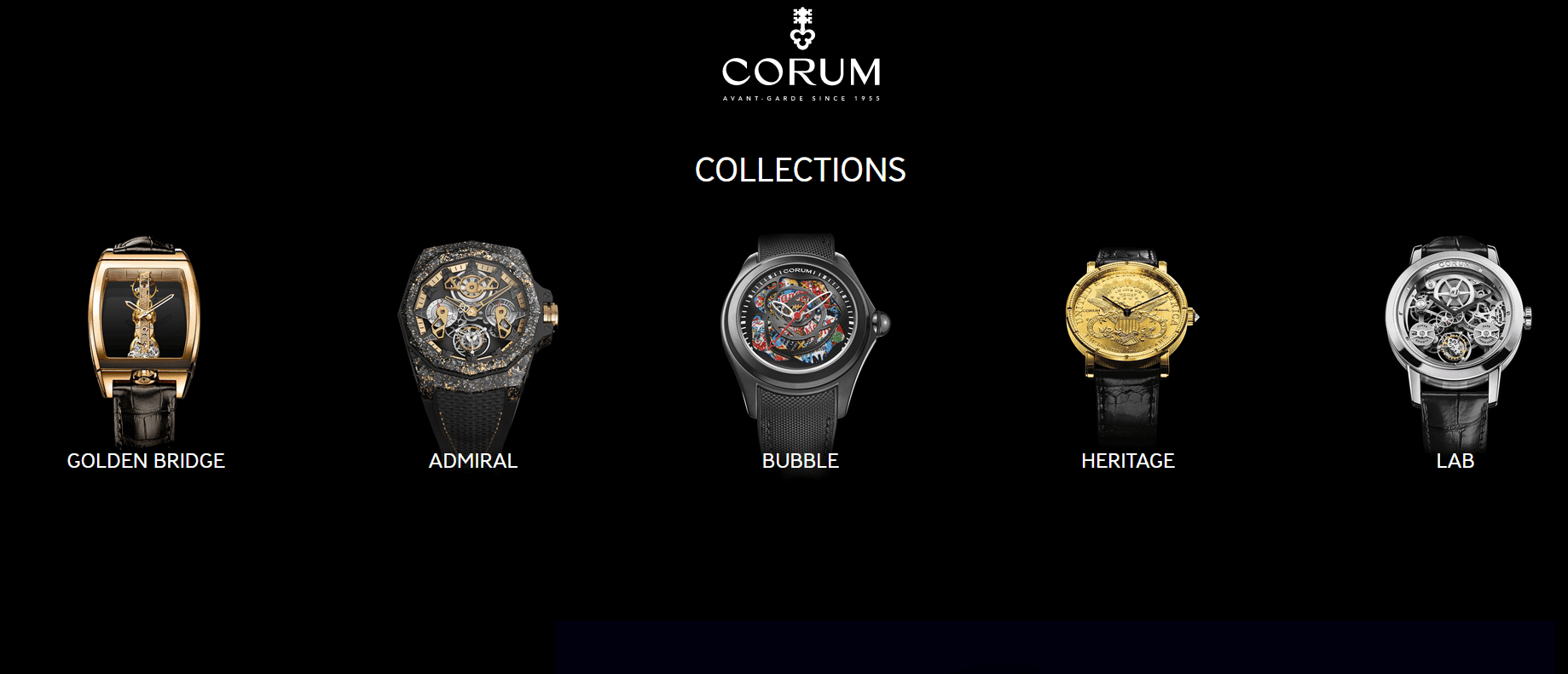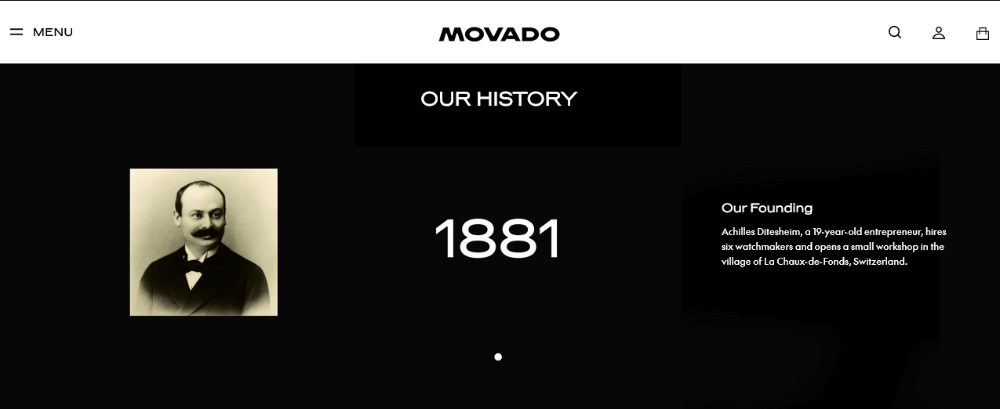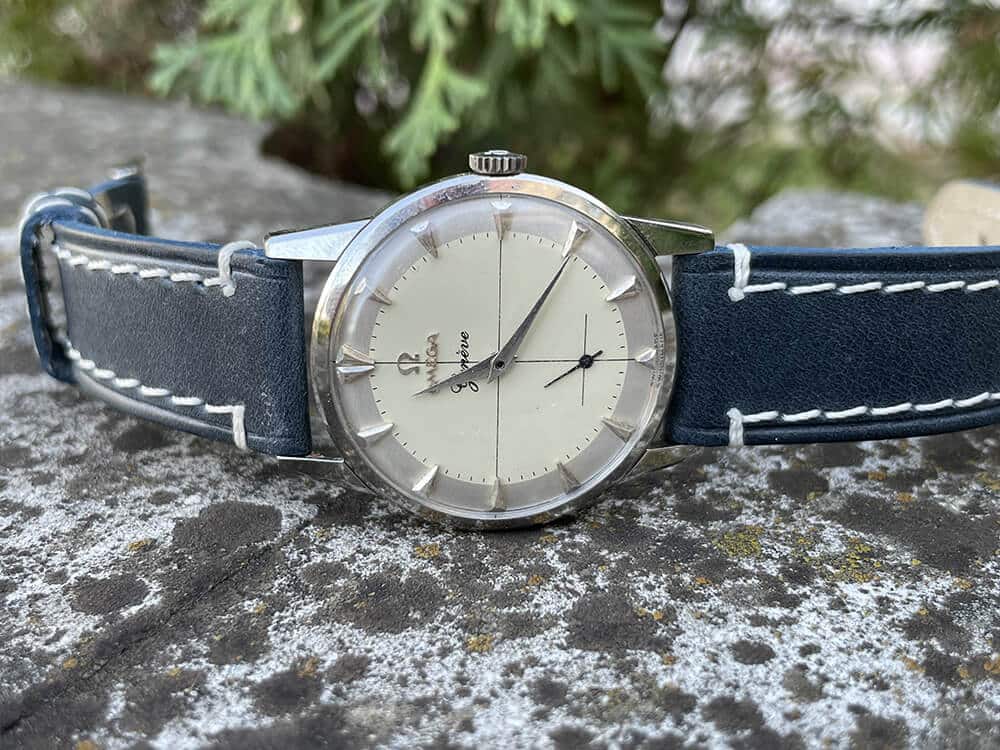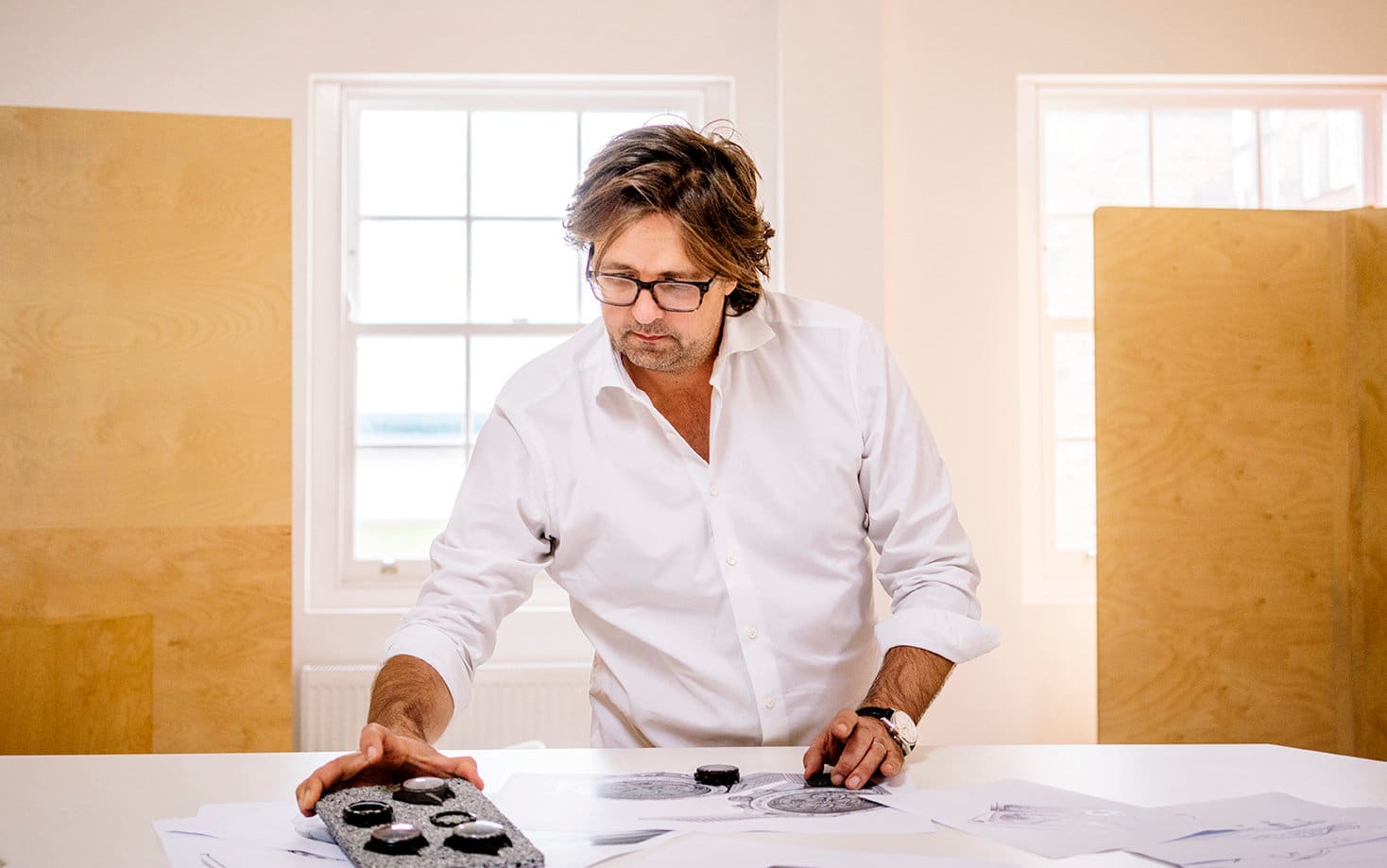The Breguet system of watches differs essentially from those we have just described, first, in the caliber, and second, because the large pillar-plate, without pillars, alone is used, the small pillar-plate being replaced by bridges. The fusee movement is not employed, and the escapement is usually a cylinder of Breguet’s own invention. The watches called demi-Breguet are constructed on the same caliber, the only difference being in the form of the bridge which supports the barrel. We shall first describe the demi-Breguet watch, and afterwards speak of the bridge which we have just mentioned. Figure 15, PI. 1, shows the caliber in its natural size. We see at A the barrel, which has eighty teeth ; at B, the large centre-wheel, with sixty-four teeth and a pinion of ten leaves; the small centre-wheel, 0, has sixty teeth, with a pinion of eight leaves ; the crown-wheel, D, also has sixty teeth, and its pinion eight leaves; the cylinder-wheel, E, has fifteen teeth, with a pinion of six leaves. “We see at F the dimension of the balance. It may easily be seen that this watch beats 18,000 strokes in an hour. Figure 1, PI. 2, shows this system on a larger scale than the caliber (Fig. 15, PL 1), in order to point but more clearly all the parts of the watch. The movement here is seen upon the surface of the pillar-plate, opposite the dial, because, as we have already said, there is but one pillarplate in this kind of watch. The pillar-plate, A, has a small base around its edge by which it rests on the case, to which it is fastened by several screw-keys. The barrel B, of which we see but a part, the rest being hidden by the bridge C C, carries eighty teeth on its rim. The bridge C C, is fastened upon the pillar-plate, A, by two strong screws, a a, and two chicks. We see on this bridge a steel ratchet-wheel, b ; a click-wheel, c, and moving upon a screw, is constantly impelled against the teeth of the rachet-wheel by the spring, d, which is fastened to the bridge by a screw and chick. These two last pieces are also of steel. The three screws which we see on the ratchet-wheel around the centre, are not tapped into the bridge, as might be supposed from an inspection of the plate, but are screwed into the base of the arbor, for otherwise they could not turn; they serve to join it to the barrel-arbor, which winds the main-spring and holds it by the click and spring-work, so that it may not fall back. It is in the adjustment of the pieces which compose the barrel-arbor, the click and spring-work, and the form of the bridge, C C, that the Breguet watches differ from the demi-Breguet, of which we are now speaking ; we shall hereafter describe the difference of these pieces, and compare them in order to point out this difference. The large centre-wheel, D, is the highest of all, passing above the barrel and the balance, as may be seen in the plate ; this is supported by the bridge, E, which is fastened to the pillar-plate, like all the others, by a strong screw and three chicks. The small centre-wheel, F, supported by the bridge, G, is placed under the large centre-wheel, D, and beneath the balance. The fourth wheel, H, is supported on this side by the bridge, I. This cylinder-wheel passes through the pillar-plate into an opening which we see in Fig. 2, at M, and is lodged in a cavity made in the barret K, which is fixed upon this sur- face of the pillar-plate by two good screws and two chicks. The cylinder-wheel, which is concealed in the figure by the bridge, K, which supports it, and by the balance, has one pivot revolving in the bridge, K ; the other revolves in the barret, N, which is found on the other surface of the pillar-plate, and which also receives the lower pivots of the two wheels, F and H. The upper pivot of the balance revolves in the cock, L ; the lower pivot moves in another bridge, which is placed on the other surface of the pillar-plate, and is called the chariot. The bridge, L, of which we have just spoken, supports the small ear, r, which receives beneath, in a small hole which may be seen there, the pivot of the pinning of the spiral spring. We see a sort of hand at m ; this is the end of the regulator, which is moved to the right or left to accelerate or retard the movement of the watch. This pieec is made in the following manner. Take a thin piece of steel, long enough to reach from the end of the hand, m, to its opposite extremity, o, pierce a hole in the centre of the part n, place it on an arbor, and trace the two circular lines seen in the figure. The centre of the circle may even be removed, care being taken to make the hole slightly conical; that is, smaller on the surface designed to rest on the cock, L, than on the outer part. The rest is filed to the shape indicated in the figure. Then place on the circle the small piece of steel, w, which is inversely conical to the hole in the regulator. This piece is fastened to the cock in the middle of the regulator by two screws. The regulator can now be turned with ease around the piece, n, grazing it slightly. The ear, o, at the end of the regulator, has two small pins on the under side, very near each other. Between these two pins passes the first turn of the spiral-spring, the elasticity of which commences near this point. The cylinder-escapement is generally used, but any other dead-beat escapement may be substituted for this ; we shall enter upon the details of this escapement in the chapter devoted to the subject, only saying here that, in good watches, the four pivots, at least, of the two pieces of the escapement revolve in holes made in jewels which are adjusted to the pillar-plate, or upon the bridges. Figure 2 represents the second surface of the pillar-plate on the side of the dial, figure 1 having shown the surface on the side of the wheels. We see in Fig. 2, at P, an opening in which the cylinder constituting the barrel can turn without any friction against the interior of the opening P ; this gives facility for the largest possible spring, as the barrel may be raised almost to the dial. We also see in Fig. 2, a barret, N, which is fastened to the pillarplate by two screws. This barret receives, at a, the pivot of the small centre-wheel ; at b, that of the crown-wheel, and at c, that of the escapement-wheel. This barret is edged off beneath, in order to give to the brass the requisite thickness relative to” the length of the pivots. We see in the same Figure 2, a second barret, 0, which is called chariot. This barret has, near its centre, a projecting part, E, of the thickness of the pillar-plate. This part, B, enters a notch of the same form, which is made in the pillar-plate, reaching to the level of the other surface, and is adjusted loosely enough to permit a movement of three or four degrees or more to the right or left ; the reason of this we shall soon explain. This slide is first fastened with a screw, s. The cock L (Fig. 1) is not fixed upon the pillar-plate by the screw, t, but is fastened to it by the part R, of the chariot, 0, and by three chicks which are marked there. We see at d, on the same chariot, the place of the pivot of the cylinder. We can readily conceive that, if the two pieces are closely fitted and fastened together, the chariot, O, being also fastened upon the pillar-plate by the screw, s, the point, d, in which the lower pivot of the balance rests, can describe a small arc of a circle about the point s, and that by this means the cylinder can approach or recede from the centre, c, of the wheel ; the escapement can thus be rectified at pleasure if in the adjustment of the two pieces composing it any error is perceived. To guard against this inconvenience, a screw with a large head, T, is sunk into the pillar-plate ; this screw supports a notch, v, into which a steel pin, fastened to the end of the chariot, enters, so that by turning the head a little to the right or left with a turn-screw, the cylinder is moved to the requisite distance from the wheel. When the escapement is fixed a datum is marked on the pillar-plate, and the screw, t, of the cock is clamped ; the escapement is thus securely fas- tened. The point most worthy our present consideration is the construction of the barrel-arbor ; this differs in the Breguet and demi-Breguet watches. We are ignorant of the name of the inventor of the last, who seems to have adopted it because he found the system of the ingenious Breguet too difficult to execute. This system, however, has been generally admitted into the Parisian workshops, that of Breguet alone almost exclusively preserving the construction of this skilful artisan. We shall first describe the system of the demi-Breguet, as it will better enable us to understand the other. Figure 3 gives an idea of the adjustment of the barrelarbor to the demi-Breguet watches. The whole rod, from one end to the other, that is, from a to 6, comprising also the circular plate c?, is of a single piece. The barrel is contained with its cap in the elevation c, at the middle of which a hole, w, may be seen, pierced quite through ; on this cylindrical part, c, the cylinder, m, is placed, whose diameter is equal to one-third of the inner diameter of the barrel ; the motive spring revolves on this piece. But as these two pieces must be solidly and indissolubly joined to- gether, these two holes are pierced at the same time ; they are then fastened together by a good steel pin, which projects on the side in order to form a hook capable of holding the spring securely. As the barrel will rub upon the plate d, the friction of the whole diameter would be too great ; it is therefore turned on an inclined plane, so that the barrel rests on the smallest base consistent with solidity. The rondelle, f, is then arranged upon the barrel-arbor, a, b (Fig. 3), of the thickness of the bridge, C C (Fig. 1), and it is then adjusted above the cog-wheel, g, which is fas- tened to this round-plate by three screws, as may be seen in b (Fig. 1). We see in the figures 4, 5, 6, 7, 8, and 9, the details of the Breguet bridge, and the adjustment of his barrel-arbor. Figure 4 shows the bridge as seen above, and furnished with its click-spring. Figure 5 shows the same bridge as seen beneath, but without the spring ; this is seen separately in Figure 6. Figure 7 shows the barrel-arbor in profile, and at the side, in g, the front of the ratchet-wheel.
Figure 8 shows, on a quadruple scale, the adjustment of the piece of steel which increases the size of the arbor to the requisite proportions, and which supports the hook designed to hold back the spring. All the other figures are on a double scale for a common-sized caliber. The same letters designate the same pieces in all the figures. The bridge (Fig. 4) is not of a single piece ; it is composed of the so-called bridge, whose thickness in the upper part, b, b (Fig. 9), we may consider divided into three equal parts ; one, m, forms a single piece with the bridge ; the second, /;, &, supports a socket, a, which is joined to the bridge by the screws, 5, b (Fig. 4) ; the third is hollowed in the massive part of the bridge, and serves to contain the cog-wheel. The socket, a, of which we have just spoken, is designed to receive the end of the key when the watch is wound up, so as to preserve the other parts from any accident caused by unskilfulness. The main-spring, d, c, is edged off from / to c to about one half its thickness, so as to leave it no superfluous strength. It has an orifice or elongated opening at / to bevel the teeth of the cog-wheel. The upper part, c, is filed off to an inclined plane, so as to enter between the teeth of the cog-wheel and prevent them from falling back. This screw is fastened on the thick part of the bridge by a screw and two chicks, as in figure 6. The barrel-arbor (Fig. 7) is of steel and is in a single piece, and includes the cog-wheel, s, which is seen in the front and side at q. The part, o, n, is filed square, all the rest is round with the exception of the rods, p and r, which are squared for the remontoir. Upon the two angles opposite the same diagonal, two small notches, o, w, are made, and a steel cylinder, whose diameter is equal to one-third of the interior diameter of the barrel, is placed squarely upon this part. Figure 8, which is on a scale double that of the other figures, will explain this arrange- ment. Upon the prolongation of the diagonal of the square, ?*, which is at the centre, a hole is pierced on each side and at an equal distance from the two angles. When these holes have been wormed out, two flat-headed screws are sunk in them, and a notch is then made in each at right angles, large enough to permit the passage of the square. “When this piece is in its place, each screw is turned a quarter round ; the thick part of the screws is then turned into the notches, o, n ; the screws serve as a key, and the whole is perfectly solid. In these two systems a particular construction of the pin that holds the minute-handle is adopted. Instead of piercing the pinion, which in the old system was placed in such a manner as to rub against the lengthened rod of the axle of the large centre-wheel, the order is reversed. The pinion of the large centre-wheel is pierced through its axle, the pin of the minute-handle is replaced by a thick pinion, whose lower rod enters the hole made in the first named pinion, with friction enough to cause it to be drawn along, like the pin, and this rod bears the pivot of the large centrewheel. In this manner, the upper rod of the pinion, which replaces the pin of the minute-hand, can be more lightly held, and the sockets both of the hour and minute-wheels sustain less friction. We think that we have described these two systems intelligibly enough to be understood by every intelligent clockmaker. The watchmakers of Geneva and Switzerland have generally adopted these systems, but their patrons, finding that flat watches could thus be obtained, have abused this advantage, and required watches so exceedingly flat that the artisans have found it impossible to make the springs as large as in the Breguet watches ; the rods of the axles of their wheels being very small, the oil soon gets into the pinions, and the watches are spoiled. It is not uncommon to see these watches so flat that the wheels have not the requisite play, and rub against each other in such a manner as to destroy all regularity. As a general rule, we protest against flat watches, and the low price at which they are sold is in itself a proof of their inferiority.
